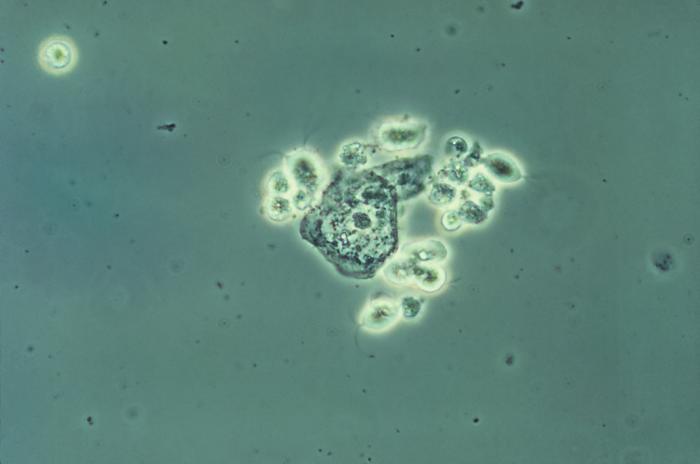Filarial worms are long thread like worms that live in the tissue and body cavities of vertebrates. Their eggs mature into tiny larvae called microfilariae. There are at least eight filarids that are of importance to humans with Wuchereria bancrofti and Brugia malayi being the most common.
Transmitted by the bite of the tsetse flu (Glossina spp.), African trypanosomiasis, of sleeping sickness is a serious infection caused by microscopic parasites of the species Trypanosoma brucei.
Although the infection is not found in the United States, historically, it has been a serious public health problem in some regions of sub-Saharan Africa.
In 2014, 3,796 sleeping sickness cases were reported to the World Health Organization; T. b. gambiense accounted for greater than 98% of cases. Many cases, however, are probably not recognized nor reported.
The Parasitology interviews, Part 2
T-shirts, coffee mugs and other merchandise featuring the parasite Trypanosoma cruzi
To see the whole set of T. cruzi merchandise go to Chagas in Black and White
Dicrocoelium dendriticum, or the lancet liver fluke is a trematode not often seen in humans.
The Parasitology interviews, Part 1
T-shirts, coffee mugs and other merchandise with a clean, computerized image of the three schistosomes. See more unique items with this design at Blood flukes in Black and White
The Parasitology interviews, Part 4
- Measles, infections you can get from dogs and the cost of the rabies PEP
- Measles in Thailand: 600 cases in first month
- Infectious disease bric-a-bracs: Measles in Europe 2018, XDR typhoid in Pakistan
- Ukraine reports 15,000 measles cases in January
- Flea-borne typhus in Los Angeles County: 107 cases since last year
- Philippines: Anne Curtis appointed as UNICEF national goodwill ambassador, Vaccinations a priority
- Babesia assay for blood donor screening receives FDA approval

Image/CDC

